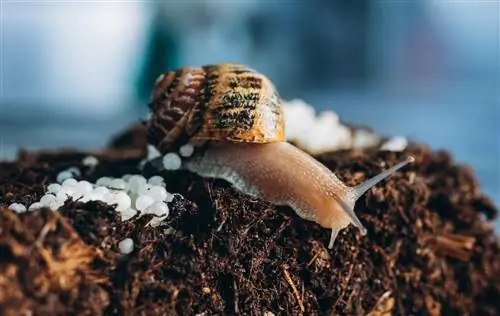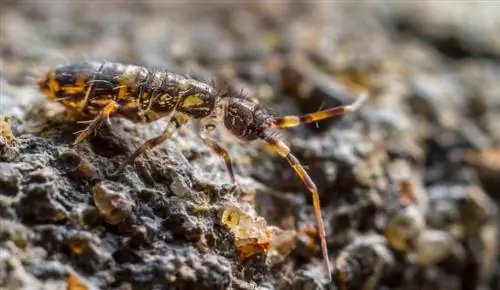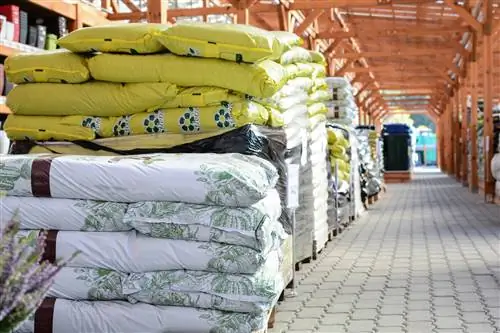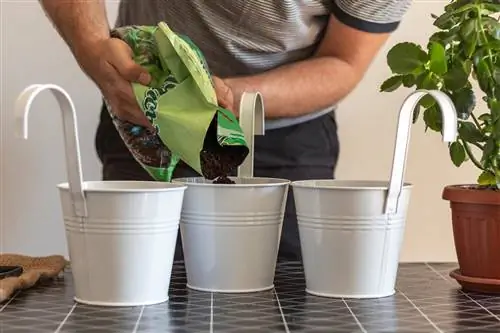- Author admin [email protected].
- Public 2024-01-05 20:48.
- Last modified 2025-01-23 11:22.
It often happens that insect eggs are laid in freshly purchased potting soil. Once the larvae hatch, damage to the plants occurs. Countermeasures must be taken now at the latest.

Which eggs can occur in potting soil and how do you deal with them?
Potting soil can contain insect eggs such as fungus gnat or snail eggs. To avoid damage to plants, snail eggs should be removed and fungus gnat larvae should be controlled by repotting, matches, yellow boards or the use of beneficial insects.
Which eggs can be contained in the potting soil?
In principle, all egg-laying insects can lay their brood in the potting soil. However, the most common ones are fungus gnats or snails. As soon as an infestation is detected, appropriate action should be taken to avoid plant damage.
Sweed gnat larvae feed on the roots of cultivated plants. These can no longer feed properly and wither away. When snails hatch, which is more the case with garden and balcony plants, the nearby plant is usually lost, because snails are among the most voracious garden pests of all.
Successful measures against snail and fungus gnat eggs
Snail eggs look like whitish or yellowish love pearls that lie close together in small piles. They can easily be confused with the fertilizer (white or yellow hard balls) added to the potting soil. Therefore, you have to look and feel carefully. Snail eggs are soft and sensitive to pressure. They should be collected with a glass and disposed of sealed in the residual waste.
Snail eggs have no place in the compost as they can develop unhindered here. If you are not sure whether all the eggs have been removed, you can repot your plant using potting soil that was previously used was sterilized. Heating to 100 degrees destroyed all pest eggs.
Fighting fungus gnats
The eggs develop best in humus-rich, moist potting soil. Once the larvae hatch, they begin to eat the roots of the plants. After some time, the plant will look stunted and the pest infestation will be noticed. Now only quick intervention with effective means can help:
- Repot the plant immediately and remove all soil, it is best to shower off the roots
- Wash pots of infected plants hot with lye
- If there is a small infestation, sticking matches upside down into the ground helps, fungus gnats don't like sulphur
- catching adult fungus gnats with carnivorous plants or
- Set up yellow boards where the animals get stuck
- Use of nematodes or predatory mites, the beneficial insects eat the larvae and disappear on their own when there is no more food available






